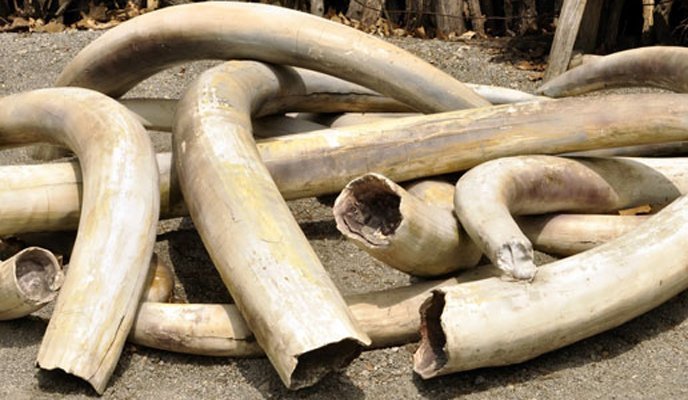Zimbabwe, along with three other Southern African nations, has submitted a proposal for the Convention of International Trade in Endangered Specials of Wild Fauna and Flora (CITES) to be amended to allow trade in ivory. The proposal will be debated during the meeting of the CITES Conference of Parties (CoP) taking place in Switzerland from August 17-28. Zimbabwe has hinted that it will withdraw from CITES if the proposal is rejected.
The proposers’ argument is that southern Africa has plenty of elephants—Zimbabwe has the world’s second largest population—and the ivory trade should be allowed to continue. Cash-strapped Zimbabwe also has a stockpile of ivory seized from poachers valued at $300 million which it is forbidden to monetize under the current rules. The proposed amendment seeks to permit trade in ivory carvings and “registered raw ivory”, including “whole tusks and pieces”, subject to certain conditions. It includes a provision stating that proceeds from the ivory trade would be “used exclusively for elephant conservation and community conservation and development programmes within or adjacent to the elephant range.”
Globally, there is no consensus on the best solution for protecting elephants. There’s also a lively political debate around whether or not the commercial trade of ivory could in fact benefit the animals. Some countries and organizations advocate for “non-consumption use”, while others—Zimbabwe included—believe that wildlife should pay for their own protection costs.
To understand the context, it’s important to examine the current status of elephants under CITES and the solutions currently being explored to protect them from poachers and from extinction.
Under CITES, African elephants are listed under two different appendices – Appendix I and Appendix II. Species listed on the former can be traded internationally, but not for commercial purposes. Species on Appendix II are not necessarily considered “endangered”, and may be traded for commercial purposes, including live animals and sport hunting, but are monitored for changes in the impact of trade on their survival. Both appendices prohibit the commercial trade in ivory.
How the demand for ivory got out of control
Just a few decades ago over a million elephants roamed the African continent. Today, thanks to the demand for ivory, elephants are walking the road to extinction—the population today is estimated at about 625,000.
To figure out how we got here, we have to turn the clocks back to the 1970s, when the demand for ivory skyrocketed. In response, CITES officially banned trade in ivory in 1989, but in 1990 and 2008 allowed the one-off sale of government-owned ivory stockpiles owned by Appendix II nations to designated trade partners Japan and China.
The aim of the exercise was to flood the market with ivory in the hope of reducing demand—but it did quite the opposite, triggering an escalation in elephant poaching. There’s a strong likelihood that this new proposal, if agreed to, will do the same, as southern African nations are already experiencing a poaching crisis and an increase in illegal trade.
Can Zimbabwe withdraw from CITES?
There is nothing preventing Zimbabwe from withdrawing from CITES if the proposal is rejected. But the assertion by the government that it will do so has not sat well with conservationists, especially when the underlying reasons are considered.
Article XXIV of CITES provides for any party to be able to withdraw from the convention through a process of denunciation. In the entire history of the Convention only one country has ever done this—The United Arab Emirates, which withdrew in 1988 then signed on again in 1990.
If Zimbabwe does withdraw, it could theoretically sell its stockpile of ivory without the interference of CITES regulations, but it would also face serious obstacles. Zimbabwe could, for instance, find that prospective buyers have banned commercial trade in ivory (as China did in 2017), or been subjected by CITES to suspensions prohibiting commercial trade.
Moreover, the power dynamics under CITES are such that rich and powerful nations could punish smaller ones. It is not just western countries, however, arguing against Zimbabwe’s proposed amendment. The Kenya-led African Elephant Coalition (AEC), a consortium of 32 African states are also strongly opposed.
For the ivory trade proposal to pass, Zimbabwe would need a two-thirds majority vote at the CoP18 meeting currently in session. Proposals have been rejected before, and it could be argued that this one is even more likely to fail based on the fact that illegal trade is ongoing.






